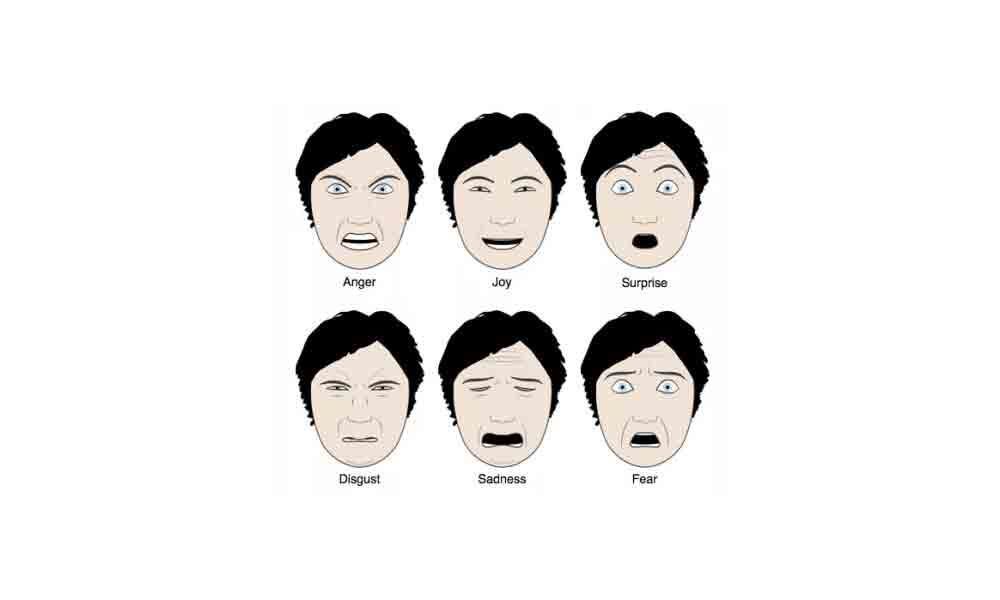Live
- Public forced to pay huge bribes for registrations
- Bhatti to visit Wanaparthy on January 4
- vizag Temples witness heavy rush on New Year
- WhatsApp Web Introduces Reverse Image Search to Combat Misinformation
- District Judge releases The Hans India calendar
- KSRTC wins 9 National Awards
- CM clears first file on day one in New Year
- Bengaluru: Man forces woman to consume alcohol during NY bash, booked
- Blankets distributed to underprivileged
- Contractor suicide case: There is no question of Minister Kharge resigning says CM Siddaramaiah
Just In

Human beings communicate in three phases: verbal (oral), non-verbal and paralanguage.
Human beings communicate in three phases: verbal (oral), non-verbal and paralanguage. (The way we project our voice to add meaning to our message).
Non-verbal communication i.e. body language is the way by which human beings convey information through conscious or subconscious body movements, facial expressions and gestures.
This area of study is formally known as kinesics and the word was coined in 1952 by an anthropologist named Ray Birdwhistell. Truly, body language has an incredible impact on our thoughts and feelings and that in due course influences our productivity at work.
Facial expressions are a noteworthy part of non-verbal communication and the chief means of conveying social information with people around us in order to gain their impression.
In "The Expression of Emotion in Man and Animals", Charles Darwin anticipated that facial expressions evolved to rapidly communicate emotional states indispensable to social survival. He hypothesized that certain facial expressions are instinctive, and therefore are universally expressed and recognized across all cultures.
In 1971, psychology researchers Paul Ekman and Wallace Friesen tested Darwin's hypothesis, by comparing the facial expressions of the Fore tribe in Papua New Guinea, who were not aware of Western culture with those of Americans under similar emotional states; and it was found that their facial expressions were the same.
It was proved that people of all cultures exhibited akin facial expressions for six "basic" emotions (anger, disgust, fear, happiness, sadness and surprise) and were able to recognize their meaning in others. This is the strong evidence that certain emotions are evolutionarily based.
A proverb quotes that Face is the index of mind.
The people of this age, are always full of anxieties. Everyone is diseased with some kind of disorder. From the very faces of the people of this age, one can find out the index of the mind. There are sufferings from internal diseases, separation from those near and dear and anxieties for maintaining the status quo. These are but some important factors which make the people of this age always unhappy.
As this is the age of team work and its efficacy depends on mutual respect, body language and facial expressions; either a leader or a sub-ordinate must keep in mind the weight age of facial expressions.
Mastering facial expressions can have a consequence not only in formal and social occasions, but also on your brain!
Types of facial expressions:
Eye contact: Eye contact is an important element in interpersonal communication and the blink rate of the eye is related to nervousness or anxiety levels.
Within their first year, even infants learn quickly that the eye contacts of others convey significant information. That is why infants desire to look at faces that hold them in mutual gaze.
Eye contact serves a variety of purposes. It leads to conversations, raises interest or participation, and establishes a rapport with others.
In the United States and Canada, intermittent eye contact is extremely important in conveying interest and attention. In many Middle Eastern cultures, INTENSE eye contact between the same genders is often a symbol of trust and sincerity however, between opposite genders.
Be conscious about the habits of eye contact:
• Narrowing our eyes usually shows unhappiness or repulsion.
• Glaring is showing that someone is upset.
• Losing eye contact with the person we are speaking to means we are not paying attention. On the other hand, being able to hold eye contact with someone means we have confidence.
• Blinking can mean that we have something to hide. The average person blinks every 4 seconds, about 15 times per minute, over 20,000 times a day. However, people can blink for a wide range of reasons since it occurs more often than necessary just to keep the eye lubricated. Researchers think blinking may help us disengage our attention, while fatigue or stress are said to directly influence the rate of eye blinking as well.
• Looking down can be a sign of submission and respect, while it also exhibits modesty.
Smile
Smile is an imperative facial expression. It shows interest, excitement, empathy, concern; it creates an upbeat, positive environment. Smile can, however, be overused. Often, men smile when they are pleased; women smile to please.
According to studies people who are good at identifying emotions tend to watch the other person's mouth more than their eyes.
• Smiling indicates pleasure and laughter shows greater pleasure and happiness and is a relatively succinct affair, happening for a few seconds.
• Not smiling can mean fear of reprisal. It can also indicate reserved attitude.
• Yawning shows tiredness or low blood oxygen.
• Biting our lips or an item such as a pen or pencil indicates stress and anxiety.
• Tightening our lips might be an indicator of disapproval or distrust.

© 2024 Hyderabad Media House Limited/The Hans India. All rights reserved. Powered by hocalwire.com







